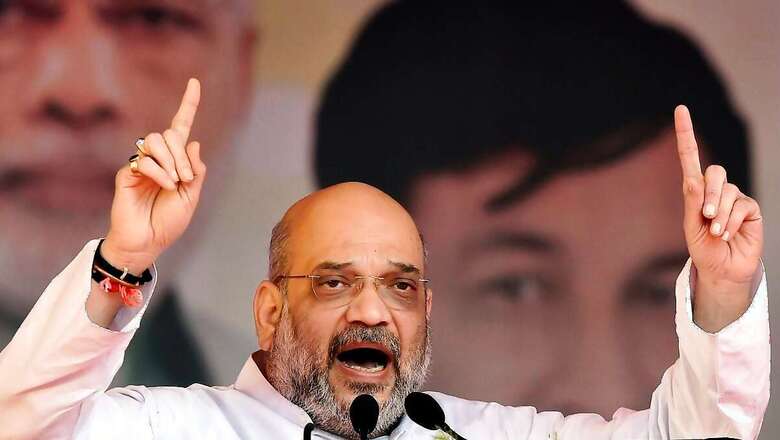
views
Union home minister Amit Shah on Thursday said that all anti-terror agencies should adopt such a ruthless approach so that new terrorist groups are not formed. Shah inaugurated a two-day anti-terror conference organised by the National Investigation Agency (NIA) in New Delhi.
The minister said that central and state agencies have succeeded in firmly curbing all forms of terrorism in the country in the last 9 years. He also said that a model anti-terrorism structure should be established under the purview of the NIA. The hierarchy, structure, and SoPs of investigation of all anti-terrorism agencies in all states should be made uniform for better coordination between central and state agencies.
“All anti-terrorism agencies must adopt such a ruthless approach so that a new terrorist organisation cannot be formed. Shah said that the task of NIA, ATS, and STF should not be limited to investigation but they should also think out of the box and take innovative measures to counter the terrorism,” the MHA said in a press release.
He added that the fight against terrorism requires collaboration from the global level to the grassroots, involving various states within the country, as well as international cooperation.
Amit Shah said that the government led by Prime Minister Narendra Modi has taken a tough stand on all the challenges like crypto, hawala, terror funding, organised crime syndicates, and narco-terror links, which has yielded very good results, but still a lot more is to be done. He said that to deal with terrorism, the Centre and the states, their agencies, and inter-agency cooperation will have to think in vertical and horizontal ways.
He stressed that all the agencies of the Centre and the state should make multidimensional and Artificial Intelligence-based use of the database; only then will there be success in the fight against terrorism. He said that the database should be used for investigation, prosecution, prevention, and action. The home minister urged every police station as well as young police officers to make maximum use of the database.
He asked the NIA and IB to take the initiative in this direction. Shah said that now the time has come to work from “need to know” to “need to share” and “duty to share” approach. He said that the number of terrorist incidents in the year 2001 was 6,000, which the government at the Centre led by Prime Minister Narendra Modi reduced to 900 in 2022. He praised the NIA for achieving more than 94 per cent conviction rate and said more work is needed in this direction. He also asked all the states to take steps to increase the conviction rate.
Fight against drugs
The union home minister said that major successes have been achieved in the fight against drugs.
These achievements include Operation Samudragupta, conducted this year under the leadership of NCB, during which narcotics worth more than Rs 12,000 crore were seized simultaneously.
Apart from this, 10 lakh kilograms of drugs have also been disposed of.
Data at fingertips
The ministry of home affairs said that Inter-Operable Criminal Justice System (ICJS)-Crime and Criminal Tracking Network and System (CCTNS) has been implemented in 99.93%, i.e., 16,733 police stations, and 22,000 courts have been connected to e-Court, and about 2 crore prisoner data is available through e-Prison, as well as 1 crore through e-Prosecution. More than 17 lakh prosecution data is available and more than 17 lakh forensic data from e-forensics.
Similarly, the National Automated Fingerprint Identification System (NAFIS) has more than 90 lakh fingerprint records. Under Integrated Monitoring of Terrorism (i-MoT), data of 22,000 cases is available for monitoring UAPA registered cases. Data of more than 5 lakh narco-offenders is available under NIDAN, i.e., National Integrated Database on Arrested Narco-Offenders. Data of about 1 lakh human traffickers is available under the National Database of Human Trafficking Offenders (NDHTO). Data of more than 14 lakh alerts is available under Crime Multi Agency Center (Cri-MAC). Data of more than 28 lakh complaints is available on the National Cyber Crime Reporting Portal (NCRP). Biometric database of prisoners and information about their visitors is available in the Prison Database. Apart from this, the national-level terrorism database of the NIA is also available.
The conference was attended by various dignitaries including minister of state for home affairs Nishith Pramanik, home secretary, director of Intelligence Bureau, director general of NIA, as well as director generals of Central Armed Police Forces, state police chiefs, and senior officials from the union and state governments were also present.



















Comments
0 comment